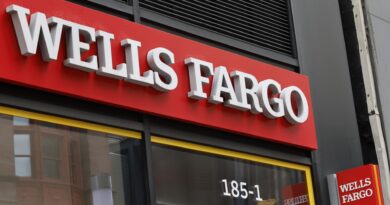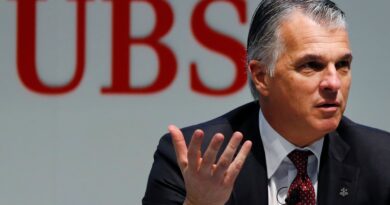What the second-quarter earnings results are telling investors about the rest of 2024
With nearly three-fourths of the S & P 500 reporting second-quarter results, the earnings picture for the back half of the year is looking unusually complicated. It’s been a ‘meh’ quarter so far We have the usual beat on bottom-line earnings, but revenue beats are below expectations. About 79% of S & P 500 are beating earnings expectations, and that is about average, according to LSEG. Two observations: First, the average beat is much smaller than it has been recently. We’re seeing an average beat of about 4.5%, nearly half the 8% upside from the first quarter. Second, only 47% exceeded revenue forecasts, a lower percentage than normal, which suggests some pricing pressure. Companies not making bold calls on the second half It’s a bit frustrating. Most companies are beating on earnings estimates but are declining to hike full-year guidance beyond the beat. Coca-Cola , GE Aerospace , Hasbro , Sherwin-Williams , Deckers Outdoor , AbbVie and Lockheed Martin all raised full-year guidance. However, they did so directly as a result of strong results in the latest quarter. A slew of other companies like AT & T , Verizon , Mattel , IBM and Chipotle simply reaffirmed their previously-announced forecasts for the year. It’s a sign that despite a still-strong economy, there are too many variables at play and companies are simply taking a wait-and-see approach. Tech earnings are still growing but decelerating There have been an elevated number of tech misses this season, including Fair Isaac , CDW , Skyworks Solutions , Juniper Networks , Enphase Energy , NXP Semiconductors , Accenture and Oracle . More importantly, for big cap tech, earnings growth is decelerating from the huge gains seen in the past two years. A more cautious consumer has reduced many companies’ pricing power For example, Procter & Gamble and Clorox have been hit by a double whammy: Price hikes are slowing and demand has been tepid. It has been a similar story for food companies, which have seen volumes fall amid greater price sensitivity from consumers. All the major food names this season – Hershey , Kraft Heinz , Mondelez , PepsiCo , ConAgra Brands , General Mills and J.M. Smucker – have all seen revenue misses on lower volumes. Meanwhile, fast-food restaurants continue to be under pressure to offer value to their guests. McDonald’s had seen poor sales , but traffic improved once it launched its $5 value meal. Shake Shack saw stronger June and July sales trends as it has employed “strategic promotions.” Wendy’s said value is “critically important” and touted its ability to offer value before some of its competitors. Further, while it continues to struggle , Starbucks said “thoughtful promotions resonated with customers in our quest to offer enhanced value indicating that our action plans are starting to take hold.” The high-end consumer is still spending, but some softness observed One of us (Bob) just returned from a five-day stay in Atlantic City: The casinos were mostly full, from the gaming tables to the restaurants. But Bank of America ran an interesting headline recently: “Travel/Leisure Cracks Emerging.” The firm noted sub-par performance in gaming ( Bally’s missed on earnings, while MGM Resorts called out fiscal first quarter softness), parks ( Comcast ‘s parks missed) and hotels ( Host Hotels cut estimates. Marriott cut, as did timeshare company Marriott Vacations . Wyndham lowered guidance on revenue per available room). Airlines were also highlighted, with Allegiant , Ryanair and Spirit noting soft pricing. Plenty of complaints about a slowing China consumer A weak China economy has been a significant headwind for a number of global companies this season. Procter & Gamble’s China sales tumbled 8% from a year ago as consumer spending slowed. PepsiCo also observed a cautious consumer there, and General Mills saw “a real souring or downturn in consumer sentiment” in the country. McDonald’s and Starbucks saw negative same-store sales in the region. Visa said payment volumes slowed within China, while Marriott revealed that it was the only region that saw negative hotel revenues in the quarter. A highly-promotional environment in Greater China was a major factor in Nike ‘s cautious outlook for its new fiscal year. Despite more tepid domestic spending, there is evidence the Chinese consumer is instead preserving their spending for when they travel outside the country. Luxury names like Kering and LVMH noted that the Chinese are taking advantage of the weak yen and buying products in Japan. Further, while Macao performance was a disappointment for Las Vegas Sands , the casino operator said Chinese visitors are still flocking to its Marina Bay Sands property in Singapore. What’s the risk to earnings in the second half? There are two significant macro risks: First, there’s an inflation scare — a series of reports that suggest its higher than expected. Second, there’s the possibility of a growth slowdown — that is, a downturn in jobs that is greater than anticipated or a consumer pullback that’s greater than what we’ve already seen. We saw a modest growth slowdown scare with the weak ISM manufacturing index reading, particularly in the sub-par employment component. That caused a drop in bond yields Thursday. Here’s the good news: So far, overall third-quarter estimates for the S & P 500 haven’t moved much since the start of this earnings season.
This article was originally published by a Cnbc.com. Read the Original article here. .





